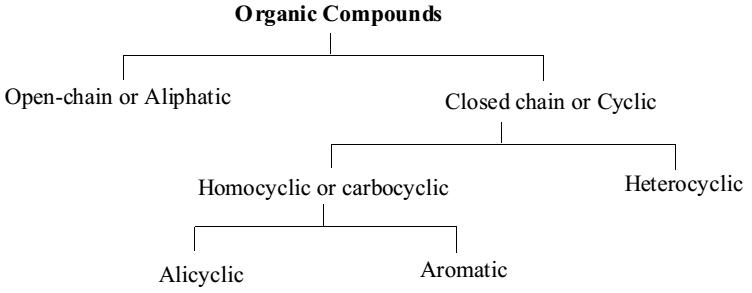Classification of Hydrocarbons
All organic compounds are divided into two broad classes based upon the pattern of chain of carbon atoms:
- Open-chain or Aliphatic Compounds
- Closed-chain or Cyclic Compounds

Open-chain or Aliphatic Compounds
This class includes all hydrocarbons (saturated and unsaturated) and their derivatives which have open-chain structures. Saturated hydrocarbons are those which contain single bonds between all carbon atoms. Unsaturated compounds contain a double (–C=C–) or a triple (–C≡C–) bond between two carbon atoms.
Closed-chain or Cyclic Compounds
These compounds have at least one ring (cyclic) system. These are further divided into two sub-classes - homocyclic and heterocyclic based on the atoms present in the ring. They are called homocyclic or carbocyclic when the ring is formed by carbon atoms only.
Homocyclic (carbocyclic) compounds are divided into two groups namely alicyclic and aromatic compounds. Heterocyclic compounds contain one or more atom (usually O, N or S atom) other than the carbon atoms.
Alicyclic Compounds
This group includes saturated and unsaturated cyclic hydrocarbons which resemble with the aliphatic hydrocarbons in properties.
Aromatic Compounds
The group of homocyclic compounds having special set of properties are called aromatic compounds. They also have characteristic smell or aroma and hence called aromatic.